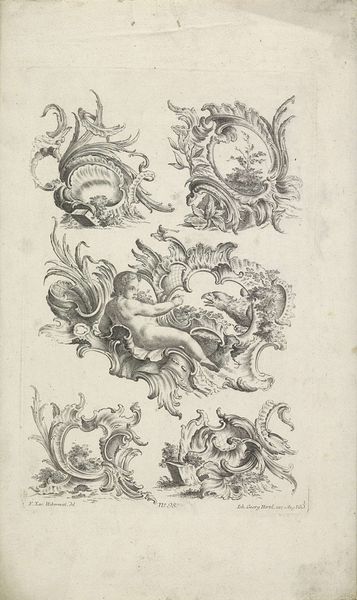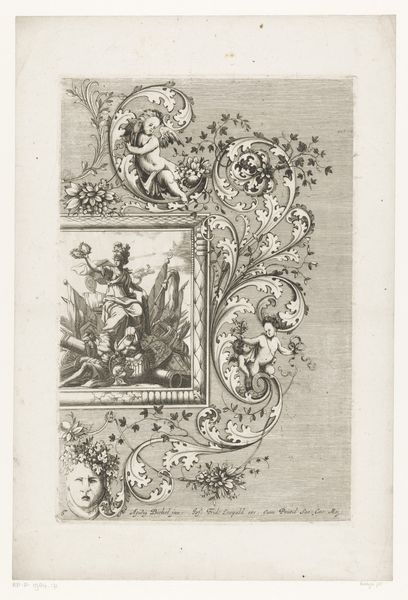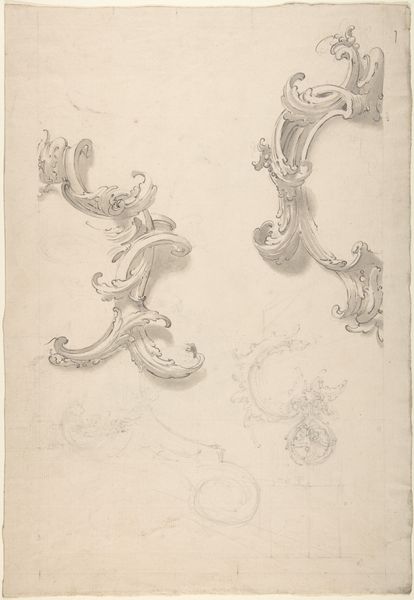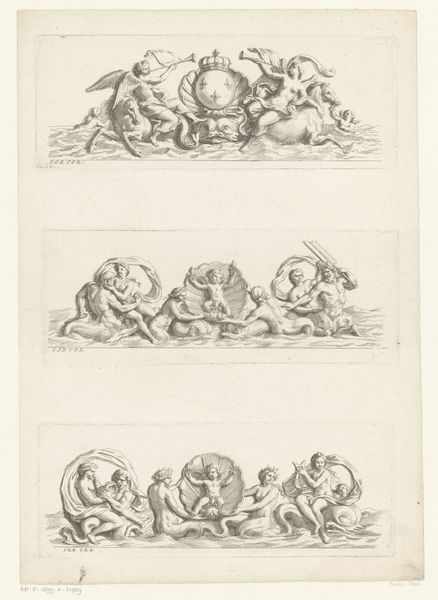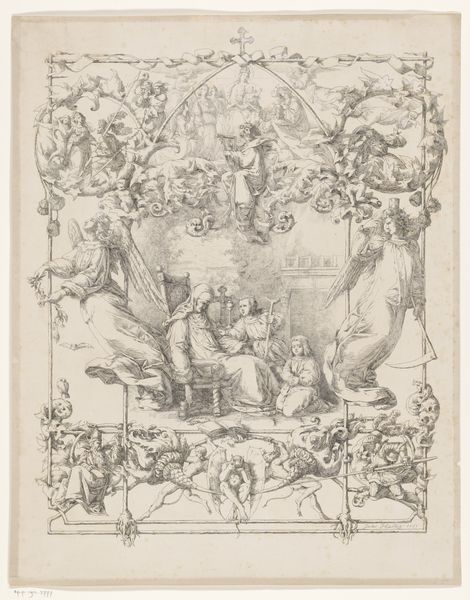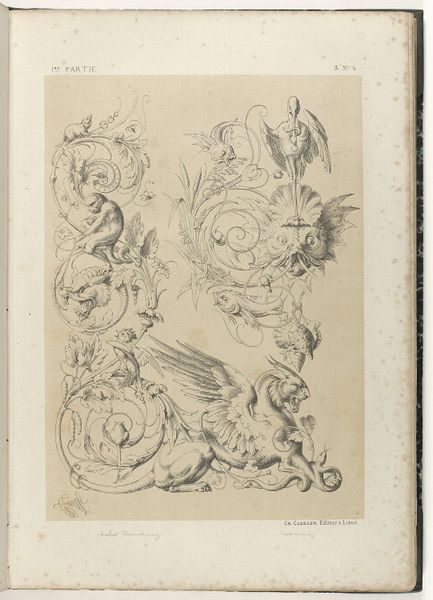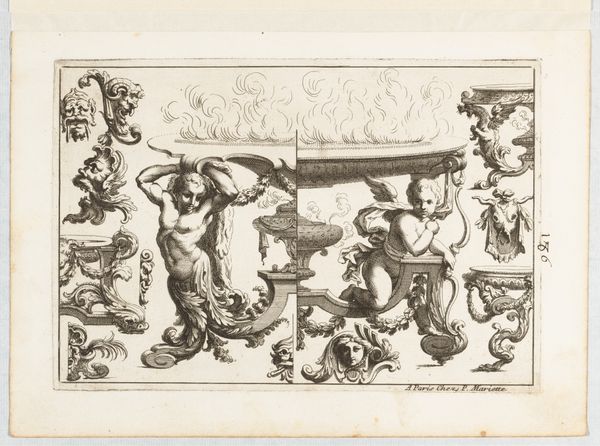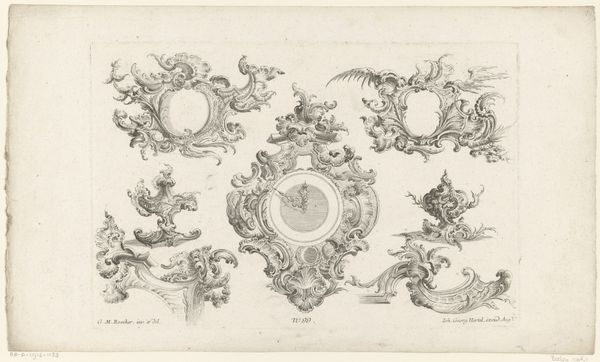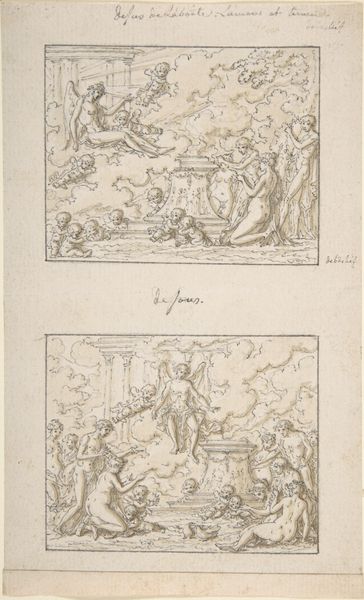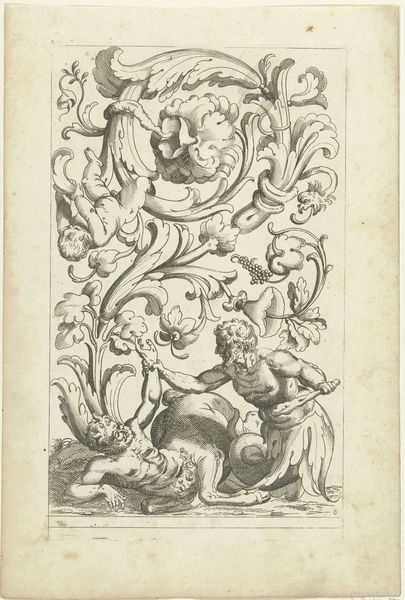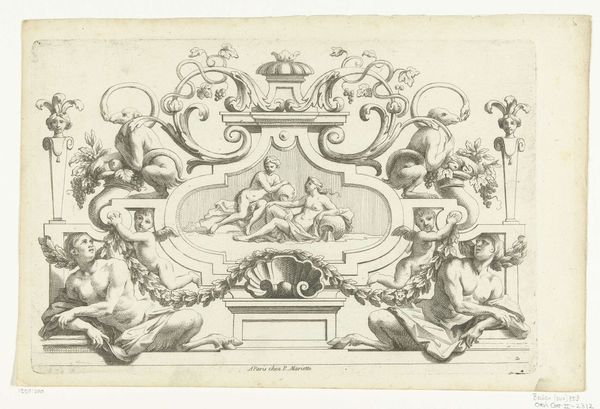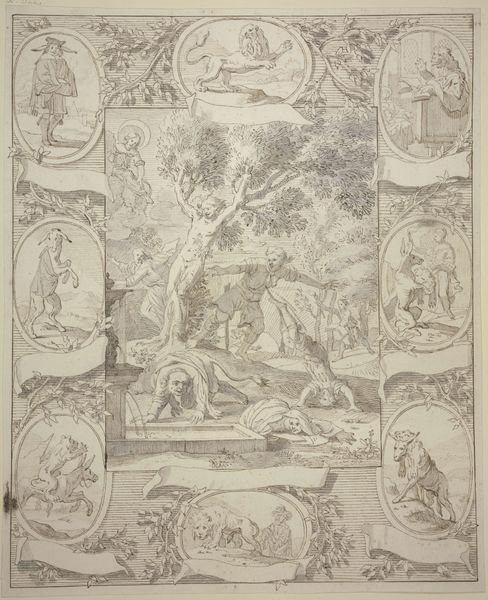
Dimensions: height 285 mm, width 187 mm
Copyright: Rijks Museum: Open Domain
Curator: Here we have Nicolas Guérard's "Medaillons en cartouches," a print residing here at the Rijksmuseum and dating roughly from 1658 to 1719. What are your initial thoughts? Editor: It’s a very elaborate sampler, isn’t it? The stark black ink on paper emphasizes the ornamental designs—but what are we looking at, exactly? Are these really meant to be patterns? Curator: Precisely! These are designs for framing devices known as cartouches, and the prints themselves would have been patterns. Guérard circulated them for use by other artisans in his circle, or further afield—engravers, cabinet makers, and so on. Consider this a design blueprint, widely disseminated through the print medium. Editor: So, this wasn't high art destined for a gallery wall, but more a commercial object geared for productive enterprise? And consider the labor invested in creating the design and executing the print; this process would have demanded significant skills and precise technical facility. Curator: Precisely. The circulation of these prints underscores how the period valued visual rhetoric, and also how style was disseminated. Baroque exuberance is on full display here—an idealized visual vocabulary intended to signal status. Think about how powerful these images could be in shaping perceptions, particularly within an expanding commercial culture! Editor: What strikes me is how disconnected the act of creation becomes; one can download design sheets like these, and essentially reproduce pre-made elements… So the question becomes, who owns "authenticity," or even authorship in the creative process when these design drawings have already been reproduced elsewhere? Curator: A keen observation that hits on some major contradictions of the period. While workshops increasingly specialized in divisions of labor and the production of design elements became highly standardized and thus profitable, the market's increased scale amplified awareness of singular talent. Editor: Fascinating, indeed. Thinking about these details in light of consumption and the design process opens an insightful window onto labor and materiality of artmaking. Curator: I agree, reflecting on the history allows us to consider its social impact on artisans. It seems we both agree the piece grants entry to considering an array of social concerns of art.
Comments
No comments
Be the first to comment and join the conversation on the ultimate creative platform.
